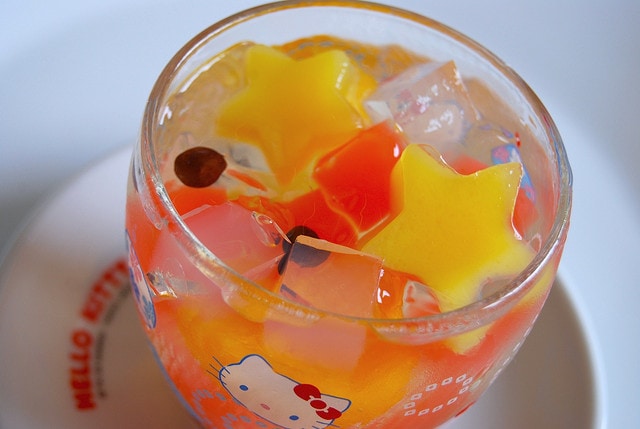Blueberries have been used for centuries for their therapeutic effects to our health. Blueberries – the fruits of this shrub, along with the leaves, are the most used parts of the plant. These fruits are listed as among the richest in antioxidants. Antioxidants are essential in the fight against free radicals, those that affect the structure of cells and lead to their aging and wear.
Which nutrients contain blueberries?
Blueberries are rich in minerals such as iron, potassium, manganese, copper, sulfur, phosphorus, zinc and chromium. They are also very rich in vitamin K, vitamin C and the vitamin B complex, being an important source of antioxidants – flavonoids, anthocyanins and glucoquinin.
Flavonoids are actually pigments that help synthesize vitamin C in the body by protecting the body from infections and helping to regenerate tissues.
Anthocyanin is also a pigment – one that gives red-violet-blue tones, and at the same time an antioxidant that in combination with vitamins C and A improves visual acuity, blood circulation in the eyes and the nervous system.
Glucocinin is a compound that, according to research, reduces blood sugar levels in blood vessels.
What benefits does blueberry consumption bring?
Full of vitamins and antioxidants, cranberries protect against infections and have anti-inflammatory, anti-aging, antidiabetic effect.
- Due to the tannin content, the leaves and fruits of the blueberry have astringent properties and are a good antibiotic
- helps in the treatment of diarrhea
- heals the wounds; because of the flavonoid content, blueberries help synthesize vitamin C, used by the body to produce collagen (the molecule that is part of the tissue); so blueberries help heal tissues
- Reduces the amount of sugar in the blood (glucose) due to glucoquinin
- Stimulates the functioning of the pancreas
- treats liver disorders
- benefit vision; blueberries stimulate retinal cell regeneration, improve visual acuity, blood circulation in the eye and the nervous system
- Reduce the risk of cardiovascular disease and help prevent myocardial infarction
- eating fresh cranberries treats urinary infections
- chewing cranberry fruit helps to fade away
- Helps improve memory.
When can I put the blueberries in my baby’s diet?
Blueberries, like currants and gooseberries, are recommended to be introduced into the diversified diet of the baby from the age of 6 months. Just as for every new food you give to the little one, do not forget to ask for the doctor’s advice and follow the 4-day rule. Blueberries pose a danger of drowning in babies, so they will be given very good feathers until they can chew them.
How do I choose and how to keep the blueberries?
Studies have shown that cooling the blueberries does not lead to the destruction of anthocyanins, some of the antioxidants in these fruits, which is good news for those who do not have access to fresh cranberries. Another comparative study on organic herbs vs. non-organic results revealed impressive results on organic blueberries that have been shown to have a significantly higher antioxidant level than non-organic ones.
How does my child’s blueberries offer?
Blueberries can be eaten:- as such / fresh- frozen (we find them in supermaket), out of season- in the form of fresh juice or syrup- in powder form prepared from dried blueberries- in the form of decoction, from leaves or dried fruitsIt is worth mentioning here also Eridiaromul, an exceptional Romanian natural medicine, obtained from blueberries.
Blueberries can be offered to children as fresh, simple, mixed with natural yogurt, butter loaf (fresh or jam), various cakes or other desserts.Cranberry Tea – To be prepared from both bay leaves and dried fruits. In the case of people suffering from diarrhea it is imperative that the tea be consumed unsweetened.
Blueberry infusion – get two teaspoons of dried leaves to half a liter of boiling water. Multiple infusion mugs per day, up to one liter per day, may be consumed.The blueberry decoction – is obtained by boiling an equal amount of fruit and blueberry leaves. Decoct has astringent properties and antibiotics, so it can be used to relieve gastrointestinal disorders (enteritis and diarrhea). Externally, it is recommended as a gargle in pharyngitis, afte, stomatitis and compresses for hemorrhoids and eczema.
Sources:
http://ro.scribd.com/doc/92209433/Afinul-Este-Un-Arbust-de-Talie-Mica
http://www.whfoods.com/genpage.php?tname=foodspice&dbid=8
Photo by:

